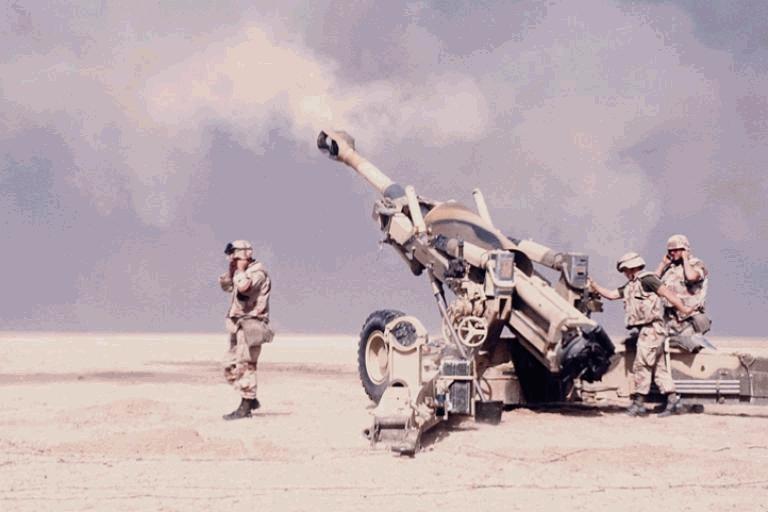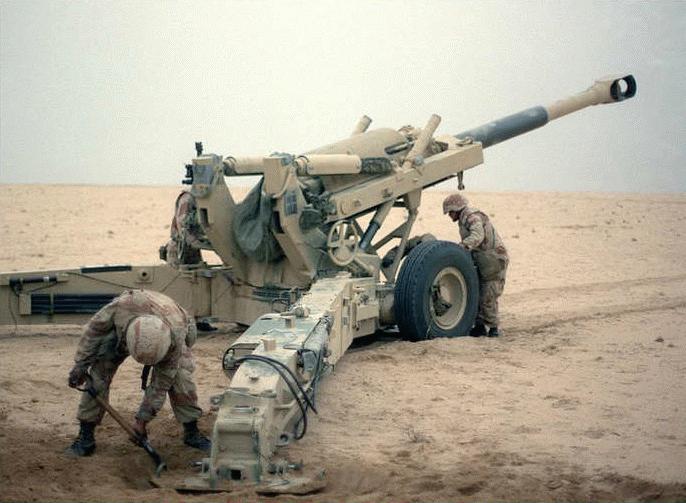I assume you are talking about this picture?
The reason this one may look as though it has a shorter barrel is because at that moment it was recoiling from the shot. There are couple of nitrogen cylinders (equilibrators) that put it back into the original position (put it "back into battery" in arty lingo.) Judging by the elevation of the tube and the distance it is going back, they are maxing out the range on the gun (22,400 meters [13.92 miles] for normal projectiles, 30,000 meters [18.64 miles] for rocket assisted projectiles.)
Here is a picture showing where the tube was normally. Note there is a protective cover over the end of the gun were the breech and firing mech are.
What mainly dictates the range is the type of projectile (due to weight and shape), charge (amount of propellant), and the elevation of the tube. There are several other factors but those are the biggies. If you are really interested, I can tell you how the rotation of the earth can affect arty projectiles in flight (really). Back to the picture, the more propellant you use the further the gun will recoil. I've seen occasions when guns had to dig pits below their guns because they were firing max charge at max elevation. Without the pit, the recoiling gun tube, going at a steep angle straight down, could be damaged if it hits the ground.
ROGER ON THE --RECOIL-- FORGOT ABOUT THAT. THANK YOU SIR, ROQUE--------HIT THE DECK!!! INCOMMING!! ROQUE





